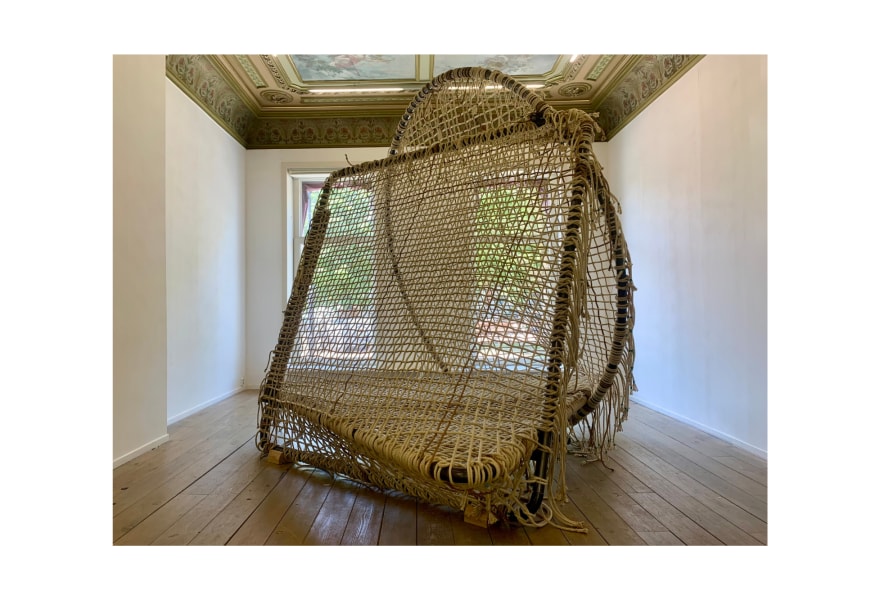07 july 2025, Flor Linckens
Dré Wapenaar: sculptures you can disappear into
Until 20 July, NL=US Art (Analysis art) in Rotterdam presents the solo exhibition 'Shelters & Textiles' by Dré Wapenaar The Dutch artist operates at the intersection of sculpture, architecture, design and performance, and is internationally known for his sculptural tents in which form, function and idealism converge. His installations, made of canvas, wood and steel, invite use, closeness or withdrawal, always with an eye for human scale.
Wapenaar consciously chooses the tent as a form, as it carries a universal visual language understood across cultures. His work has previously been shown at the MoMA in New York, MASS MoCA in Massachusetts, Kunsthal Rotterdam, Museum Boijmans Van Beuningen and the Liverpool Biennial.

This tension between shelter and encounter is also central in his latest exhibition in NL=US Art. His work has both a physical and a social dimension: Wapenaar creates sculptures that only fully unfold in dialogue with their users. Often driven by an idealistic undertone, his practice explores the act of claiming and offering space, examining how people relate to one another within a shared environment that is shaped by form, material and meaning. The artist investigates how geometry and structure move us, both individually and as part of a group dynamic. Wapenaar considers his tents as a metaphorical reflection of society.
His sculptures and organic forms create space for imagination and humanity, for chemistry between people, spontaneous encounters and temporary communities. Wapenaar makes these relationships tangible. His installations are both utopia and object of use, at once monument and shelter. In a time when public space is increasingly claimed, regulated or privatised, Wapenaar offers an alternative: a proposal for urban space. How do people use the public domain, and to what extent does that space reflect who they are?
In 'Shelters & Textiles', Wapenaar presents recent works that build on three decades of research into how people move in relation to sculpture. Where his earlier works referenced activism, camping or collective rituals more explicitly, the focus now lies on layering, materiality and spatial experience within a contemporary context. His installations are not static objects to be merely observed, but active structures that come to life when approached, entered or inhabited. The role of textiles is central to this. Not just as a construction material, but as skin, filter and threshold. The fabric determines what is visible, what feels accessible, and how light, air and sound are experienced by the visitor.
Wapenaar’s practice encompasses a wide range of constructions: from a tree tent and a shelter for street newspaper vendors to pavilions, a shower tent, a newsstand and a platform for stillness. Each work is functional, has a clearly defined purpose and is designed for direct use. What stands out is his ability to move effortlessly between scale and function, between sculptural monumentality and everyday application. Not to impress, but to invite.
His installations operate as propositions: addressed to visitors, passers-by, inhabitants. They raise questions about community and autonomy, about the role of physical space in social processes. Each work carries a form of idealism, yet always leaves room for interpretation, or even friction, when social reality proves more unruly than the design itself. In that tension, too, meaning emerges.
Dré Wapenaar was born in 1961 in Berkel en Rodenrijs, between Rotterdam and Zoetermeer. He studied at the Academy of Visual Arts in Tilburg and received the Hendrik Chabot Prize in 2005.


